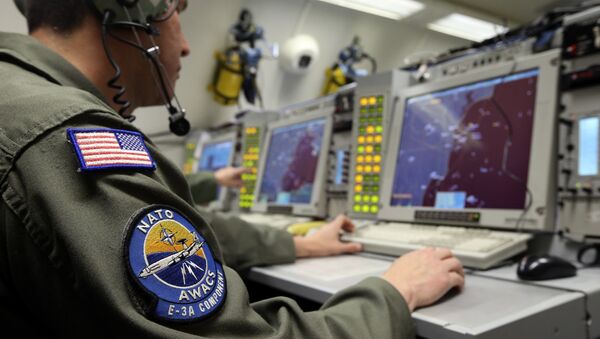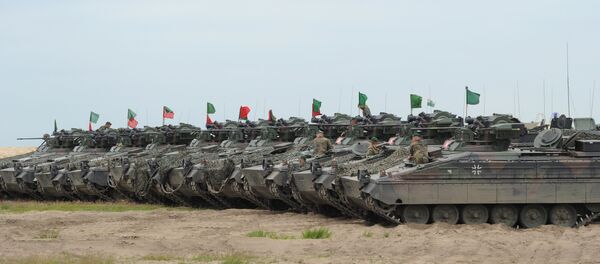NATO has been gradually building up its forces in Europe for over a decade, but has recently undertaken a huge increase in its presence in the Baltic region and Eastern Europe. The NATO Response Force (NRF) was originally set up following the Prague summit in 2002 as a multinational force made up of land, air, maritime and Special Operations Forces (SOF) that could deploy quickly.
#NATO SG @jensstoltenberg: “I expect ministers to agree to enhance our forward presence in the eastern part of the Alliance.” #DefMin
— Oana Lungescu (@NATOpress) February 9, 2016
Since then, there has been a steady buildup of forces, particularly around Russia. NATO Allies decided to enhance the NRF in 2014 by creating a "Spearhead Force" within it, known as the Very High Readiness Joint Task Force (VJTF).
In June 2015, the alliance held a huge exercise in the Baltic, with 49 ships, 61 aircraft, one submarine, and a combined amphibious landing force of 700 US Finnish and Swedish troops alongside NATO partners Finland, Georgia and Sweden. Overall, 5,600 troops took part.
SG @jensstoltenberg 'Today and tomorrow, we will make key decisions to strengthen our deterrence & #defence' #DefMin pic.twitter.com/fbySgytyxI
— Oana Lungescu (@NATOpress) February 10, 2016
In November 2015, the leaders of Lithuania, Latvia, Estonia, Bulgaria, Hungary, Romania, Poland and Slovakia have called for an increased NATO presence in Eastern Europe and the Baltic. The defense ministers meeting in Brussels Wednesday are due to confirm plans for a massive presence in the Baltic and Eastern Europe region.
Eight New Headquarters in Eastern Europe
British media reported ahead of the meeting that five UK warships and about 530 Royal Navy personnel will be sent as part of what sources described as "NATO's largest military buildup in eastern Europe since the Cold War."
— Oana Lungescu (@NATOpress) February 10, 2016
RU Foreign Ministry: did #nato protect anyone in #paris attacks? No, it can't. It exists to eat through budgets and scare ppl with #russia
— Murad Gazdiev (@MuradoRT) February 10, 2016
At a press conference before the meeting, NATO Secretary General Jens Stoltenberg said NATO was: "increasing our presence in the eastern part of the alliance with more assurance measures meaning planes, air policing, naval presence in the Baltic Sea and the Black Sea, increased naval presence and also more boots on the ground with more exercises and troops.
"And we are also increasing our ability to reinforce, we have tripled the size of the NATO Response Force to around 40,000 troops and this is a force which can move quickly and the core element or the lead element is the Spearhead Force which can move within a couple of days," Stoltenberg said.
Since the end of the Cold War, NATO has admitted to its alliance the former Warsaw Pact states of the Czech Republic, Hungary, Poland, Bulgaria, Estonia, Latvia, Lithuania, Romania, Slovakia, Slovenia, Albania and Croatia.



